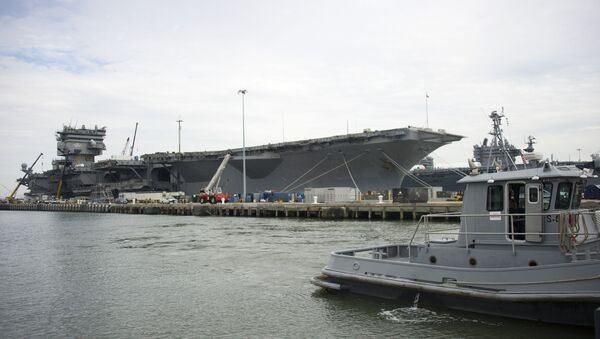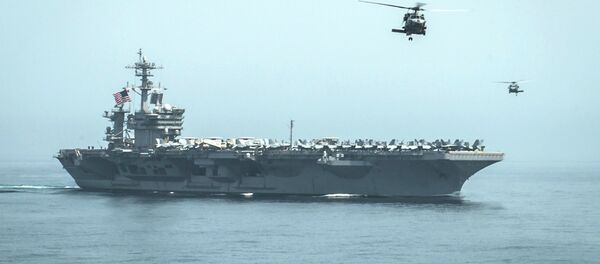The Navy is scrapping previous plans to put non-nuclear elements of the retired carrier into commercial recycling programs. The Navy retired the ship on February 3, and moved to cancel a request for a proposal to conduct a commercial recycling program, according to a statement.
“The Navy has identified that it requires more information to determine the approach for the disposal of CVN 65 [the USS Enterprise], including the reactor plans,” according to Navy spokesman William Couch. The next approach has not been identified, but will be, according to Couch, “more technically executable, environmentally responsible,” and “an effective utilization of Navy resources.”
In the meantime, the carrier will stay at the the Newport News shipbuilding yard in Virginia until August 2017. After the carrier completes “inactivation availability,” the Enterprise is intended to enter another storage facility. The Navy has not disclosed its plans for temporary or permanent storage of the legacy vessel.
There are a few options the service has regarding what can be done with the eight reactors on the Enterprise, according to Navy Sea Systems Command. It can choose to dismantle the reactors altogether, or search for ways that the power generators could be repurposed.
Alternatively, the Navy may simply postpone the decision of what to do with the reactors. This option would include locking up the Enterprise in storage for a “limited number of years.” There are ports in Puget Sound, as well as Bremerton, Washington, where the Enterprise could be moored as part of an intermediate storage option. Since 2012, Navy officials have grappled with how to appropriately deconstruct the historic ship. After five years there has been little progress. Sending the ship to Puget Sound, for example, would interfere with ongoing shipbuilding projects, the Virginian-Pilot reported. The Navy had solicited offers from contractors to commercially repurpose certain components of the ship but even this strategy has been abandoned.
The key aspects to decommissioning the vessel are the cost and the environmental impact. “Given the complexities of the issues involved in recycling CVN 65, the Navy remains committed to a fully open and public process for conducting the first-ever disposal of a nuclear-powered aircraft carrier,” Couch said.
The Navy plans to meet with community groups to “ensure the Navy has the opportunity to understand public concerns with the alternatives.”



